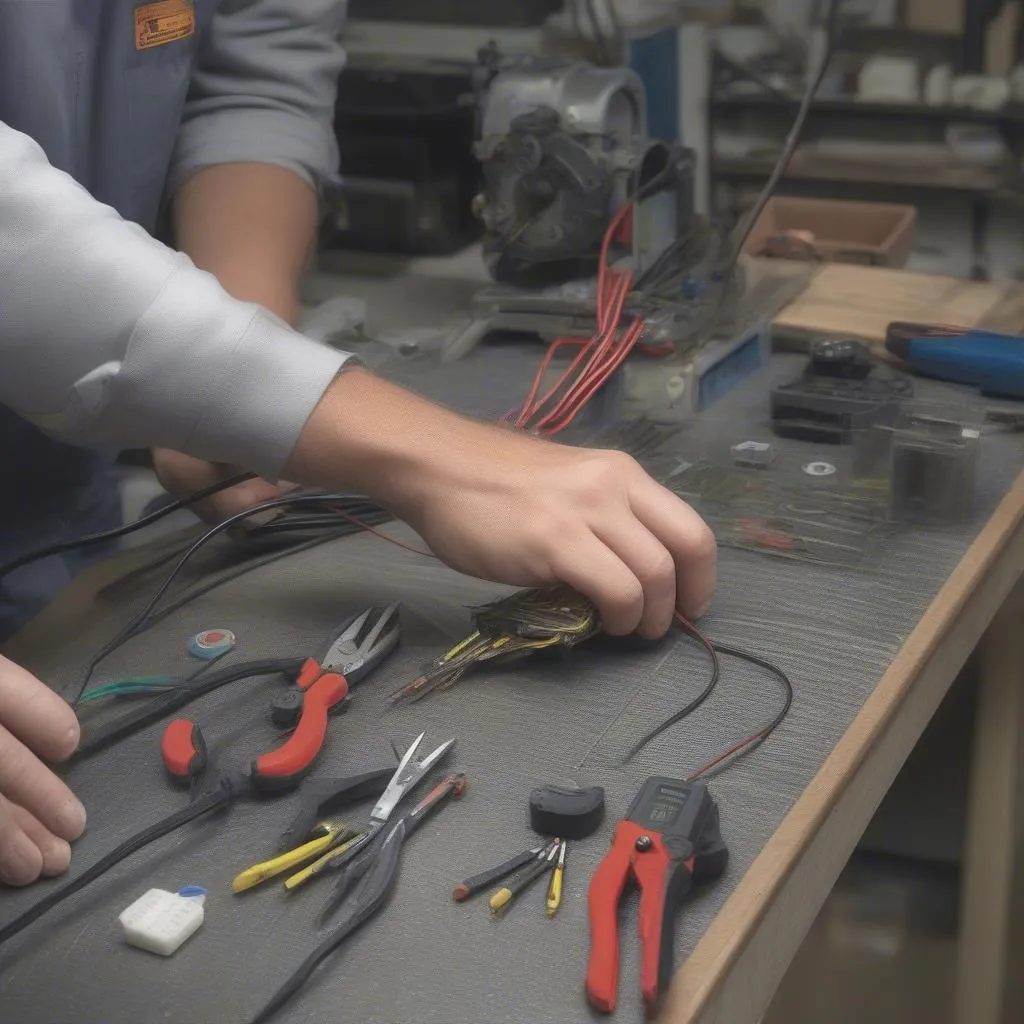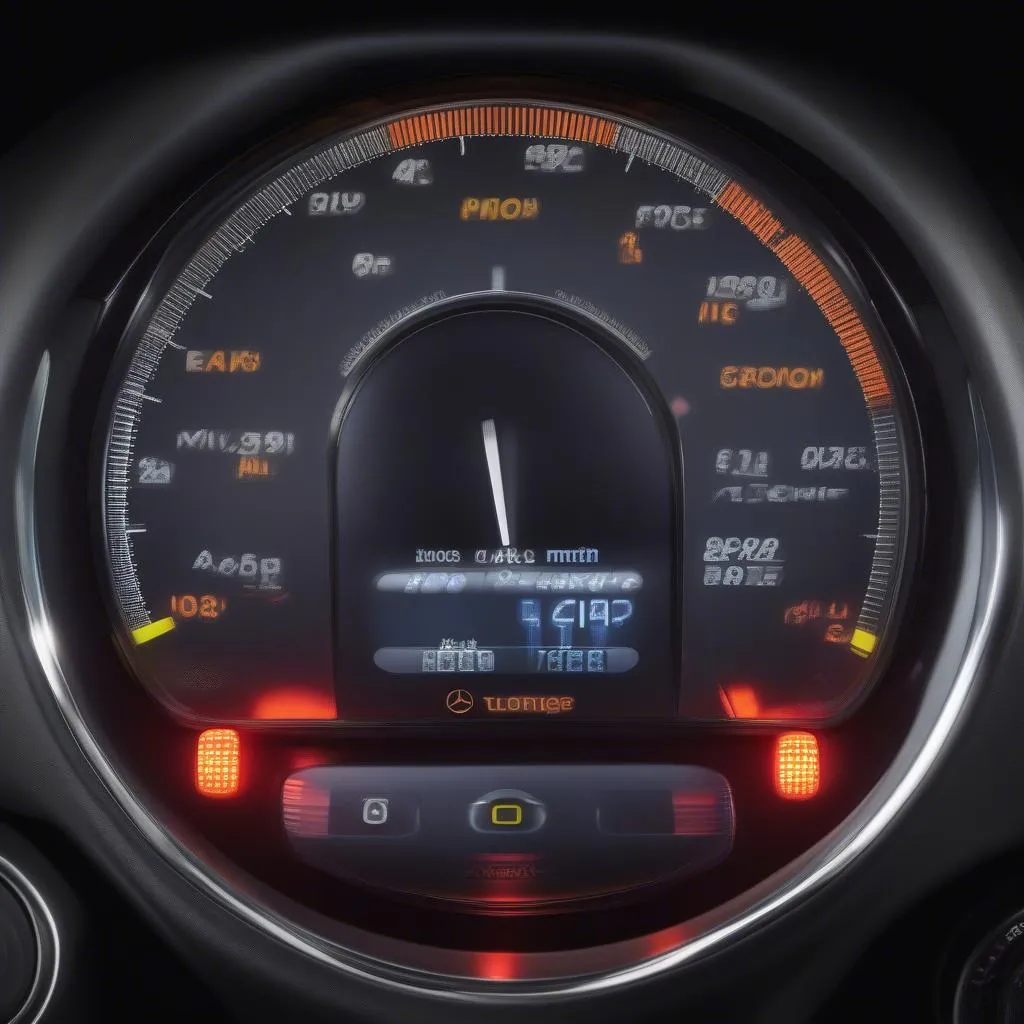Is your Mercedes dashboard lit up like a Christmas tree? Are you plagued by persistent warning lights related to lighting systems? You might be dealing with a faulty light fix module (LFM). Don’t worry, this is a common Mercedes issue, and understanding how to address it can save you headaches and expensive trips to the dealership.
What is a Light Fix Module and Why Does It Fail?
The light fix module is essentially a control unit responsible for managing various lighting functions in your Mercedes. This includes headlights, taillights, interior lights, and more. Over time, these modules can fail due to:
- Electrical issues: Voltage fluctuations, short circuits, or even a weak car battery can damage the sensitive electronics within the LFM.
- Water damage: Exposure to moisture, often from a leaking windshield or sunroof, can corrode the module’s circuitry.
- Wear and tear: Like any electronic component, the LFM can simply wear out over time.
Recognizing the Symptoms of a Failing Light Fix Module
A malfunctioning LFM can manifest itself in several ways, including:
- Flickering lights: One of the first signs is often intermittent flickering or dimming of your headlights or taillights.
- Malfunctioning turn signals: Your turn signals may blink rapidly, stay illuminated, or not work at all.
- Erratic dashboard warnings: Expect to see warning lights related to lighting systems, such as bulb failure warnings, even if the bulbs are working correctly.
- Complete lighting system failure: In severe cases, the entire lighting system may cease to function.
Diagnosing and Replacing the Light Fix Module
Before jumping into repairs, it’s crucial to diagnose the problem accurately. While the symptoms above often point to the LFM, they could also indicate other electrical faults.
- OBD-II Scanner: Using an OBD-II scanner, like those offered by Cardiagtech, you can read the error codes stored in your Mercedes’s computer. This will pinpoint the source of the problem.
- Visual Inspection: Carefully inspect the LFM for any signs of physical damage, such as corrosion or burnt components.
Tools You’ll Need:
- OBD-II Scanner
- Replacement Light Fix Module (compatible with your Mercedes model)
- Basic hand tools (screwdrivers, socket set)
Repairing the LFM:
In most cases, replacing the LFM is a more practical solution than attempting to repair the module itself.
Important: The exact location and replacement procedure for the LFM can vary significantly between Mercedes models. Always refer to your vehicle’s service manual or seek professional help if you’re unsure about any step.
 Mercedes Light Fix Module Location
Mercedes Light Fix Module Location
Frequently Asked Questions
Q: Can I drive my Mercedes with a faulty light fix module?
A: While technically possible in some cases, it’s highly discouraged. Malfunctioning lights pose a significant safety risk, both for you and other drivers on the road.
Q: How much does it cost to replace a Mercedes light fix module?
A: The cost can vary depending on the Mercedes model and labor rates in your area. Generally, expect to pay between $300 and $800 for parts and labor.
Q: Can a faulty LFM drain my car battery?
A: Yes, a malfunctioning LFM can potentially draw excess current, especially if it’s causing lights to flicker or stay on intermittently, eventually draining your battery.
 Replacing a Mercedes Light Fix Module
Replacing a Mercedes Light Fix Module
Conclusion
Addressing a faulty light fix module is crucial for maintaining your Mercedes’ safety and reliability. By understanding the symptoms, diagnosis process, and potential solutions, you can confidently resolve this common issue and get back on the road with peace of mind. Remember, if you’re unsure about any aspect of the repair, consulting with a qualified Mercedes technician is always recommended.
For reliable diagnostic tools and resources, be sure to check out the range of products available at CARDIAGTECH.


